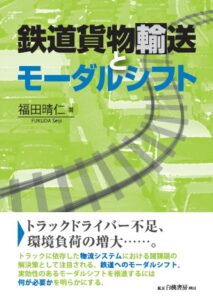 | タイトル:鉄道貨物輸送とモーダルシフト 著者:福田晴仁 貨物輸送をトラック輸送から鉄道や船舶による輸送に転換する、モーダルシフトが叫ばれて久しい。しかし鉄道は貨物輸送における補完的機能を果たすのみとなっており、モーダルシフトが進展しているとは言い難い。モーダルシフトを推進するには、公的部門による大規模な支援によって主要幹線の輸送力を増強すること、JR貨物の独占となっている地域間鉄道貨物輸送市場への新規参入を促進し、市場を活性化することが必要である。 Since the 1990s in Japan, there has been demand for a modal shift in freight transport from truck transport to transport by rail and ship. However, rail freight transport plays only a complimentary role, accounting for a little less than a 1% share of freight transport on the basis of tonnage and a share of around 5% on the basis of ton-kilometers. It is hard to say that this modal shift from truck to rail is progressing. Two measures are necessary to promote a modal shift from truck to rail transport.
The first measure is to facilitate new entries of railway companies into the rail freight transport market both to avoid reductions in the rail freight route network resulting from JR Freight discontinuing its rail freight services, and to activate that market. This is an important measure to promote the modal shift by ensuring that intercity rail freight transport does not become a JR Freight monopoly, and by stimulating the rail freight transport market.
The second measure is to carry out effective infrastructure development in reinforcing the rapid long-distance service of container trains on trunk lines where demand is vigorous. Under the current small scale infrastructure development, container freight trains have increased from 24 cars to 26 cars, but adding only two cars to a train is insufficient to promote modal shift. It is essential that measures are carried out that can increase transport capacity and reduce impediments to transport. One example of specific measures in this area is the development of bypass routes to allow freight trains to run. |




